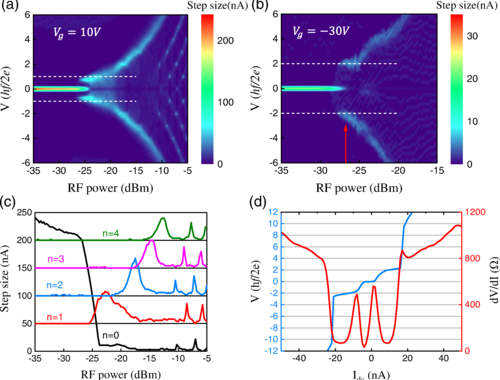
4 π -Periodic Supercurrent from Surface States in Cd 3 As 2 Nanowire-Based Josephson Junctions
Authors: An-Qi Wang, Cai-Zhen Li, Chuan Li, Zhi-Min Liao, Alexander Brinkman, and Da-Peng Yu
Phys. Rev. Lett. 121, 237701
Abstract: The combination of superconductivity and surface states in Dirac semimetal can produce a 4π-periodic supercurrent in a Josephson junction configuration, which can be revealed by the missing of odd Shapiro steps (especially the n=1 step). However, the suppression of the n=1 step is also anticipated in the high-power oscillatory regime of the ordinary 2π-periodic Josephson effect, which is irrelevant to the 4π-periodic supercurrent. Here, in order to identify the origin of the suppressed n=1 step, we perform the measurements of radio frequency irradiation on Nb–Dirac semimetal Cd3As2 nanowire–Nb junctions with continuous power dependence at various frequencies. Besides the n=1 step suppression, we uncover a residual supercurrent of first node at the n=0 step, which provides a direct and predominant signature of the 4π-periodic supercurrent. Furthermore, by tuning the gate voltage, we can modulate the surface and bulk state contribution and the visibility of the n=1 step. Our results provide deep insights to explore the topological superconductivity in Dirac semimetals.
